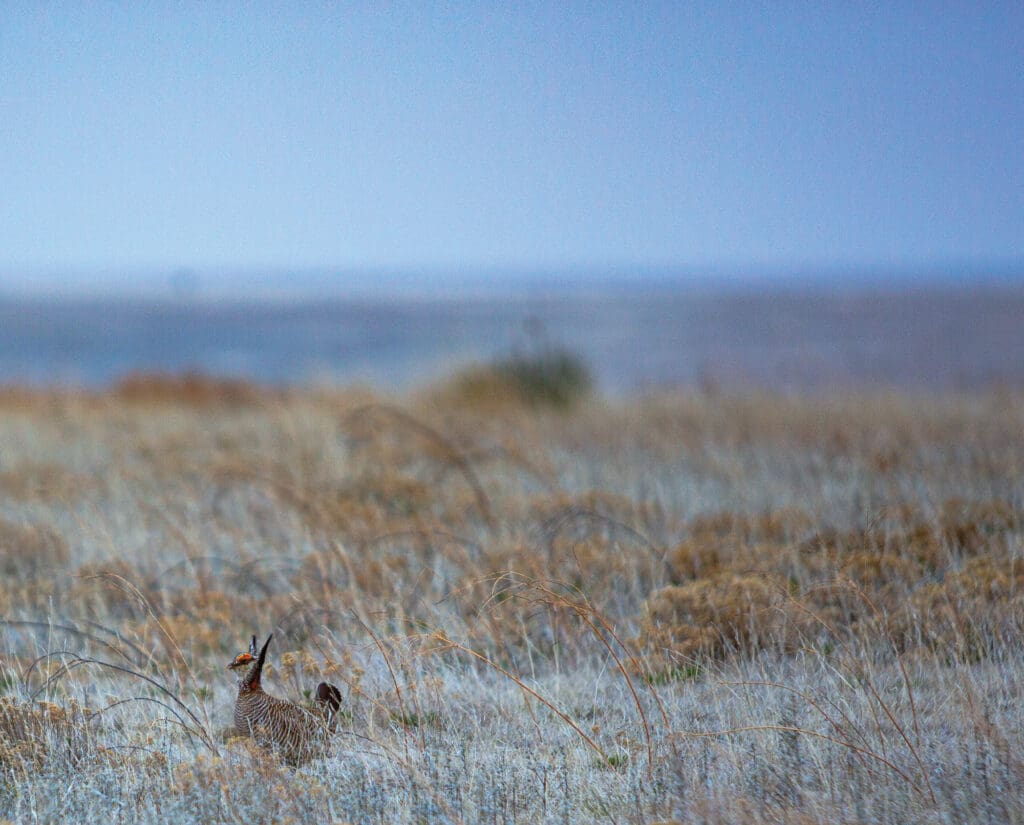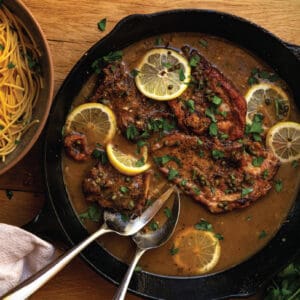
Jack Hennessy grew up in the South Suburbs of Chicago…
This easy pheasant piccata recipe is a simple, savory dish that allows you to converse with guests while impressing their taste buds.
In April 2021, my wife, Dara, and I headed to Oakley, Kansas, to meet up with Jim Millensifer, president of the Kansas Ringneck Classic and our guide for watching lesser prairie chickens dance. Generally, these lek-side blind experiences require four clients. Ranch owners use these admission fees to further conservation practices on their land. Thankfully, Jim was able to make an exception for my wife and me because, technically, there were three of us; Dara was pregnant with our second at the time.

The night before our morning sit, we joined Jim and his wife, Laurie, for a pheasant piccata dinner. He assured Dara that any alcohol from the white wine would burn off. Before he retired, Jim worked in the hospitality industry in varying capacities for many years. When he recounted those days, he said, “I was just a lowly fry cook.” In actuality, Jim is a great cook and a great host. The meal was something I will always remember, both for the food and the company.

Up until recently, I had yet to try and recreate his dish. I incorporated some of Jim’s methods into this simple recipe, including tenderizing and flattening pheasant breasts before flouring and frying.
Because it is so simple (and comes with leftover white wine), Jim’s pheasant piccata is a great dish to prepare when hosting company. This recipe allows you to converse while cooking and enjoy a glass of white wine with the person standing opposite you at the stove. Take in the smells of it all, be present, and be thankful for the food and the people in your home. That is what this time of year is about, after all.

Simple Pheasant Piccata
Equipment
Ingredients
- 2 pheasant breasts
- 2 pheasant thighs
- Traeger Fin & Feather Rub or a mix of Italian spices, kosher salt, and black pepper
- 1 cup all-purpose flour
- 2 cups olive oil
- ¼ cup salted butter
- 1 shallot sliced
- 1 tbsp freshly minced garlic
- ½ cup white wine
- 1 ½ cups chicken stock
- Juice from half a lemon
- zest from 1 lemon for extra lemony flavor (optional)
- ¼ cup corn starch
- 2 tbsp capers drained
- Salt to taste
- 16 oz spaghetti
- Freshly chopped Italian parsley for garnish (optional)
Instructions
- Using a meat mallet, lightly pound the pheasant breasts and thighs to flatten them.
- Spice the pheasant breasts and thighs and leave in the fridge, uncovered, for 1-2 hours.
- When you’re ready to cook, heat the olive oil and butter in a skillet to 375 F. Dredge the pheasant in flour, shake off excess, and fry it in the skillet. Do not crowd the pan; the skillet should only be half full to avoid steaming and softening the crust. Flip when the underside is golden brown. Remove when both sides are golden brown and set aside on a stainless steel grate or something similar so that the oil may drip off.
- Meanwhile, boil a pot of water. Cook the pasta until it’s al dente or approximately 6-8 minutes. Strain the pasta and lightly drizzle it with olive oil.
- When all pheasant pieces are golden brown and set aside, remove most of the oil and butter from the skillet, leaving only a thin layer to cook the shallot slices. Add shallot slices and cook on medium heat until slightly seared and soft. Add minced garlic and lightly salt and pepper. Stir for a few minutes, then deglaze with white wine.
- Add chicken stock, lemon juice, lemon zest (optional), turn the heat to medium-low, and allow it to simmer for 15 minutes. Stir in cornstarch to thicken the sauce, then add capers. You are welcome to add the pheasant back to the skillet for the sauce to warm up and allow it to soak up a bit of sauce for 5 minutes or so before serving.
- To serve, dish out pasta and top with fried pheasant and sauce. Garnish with freshly chopped Italian parsley.
Notes
Nutrition
Jack Hennessy grew up in the South Suburbs of Chicago and didn't start hunting until he attended graduate school in Spokane, Washington, at the age of 26. Hennessy began work in professional kitchens in high school but didn't start writing wild game recipes until he joined the Spokesman-Review in 2014. Since then, his recipes have appeared with Petersen's Hunting, Backcountry Journal, Gun Dog Magazine, among many others. He now lives with his Wirehaired Vizsla, Dudley, in Wichita, Kansas.



